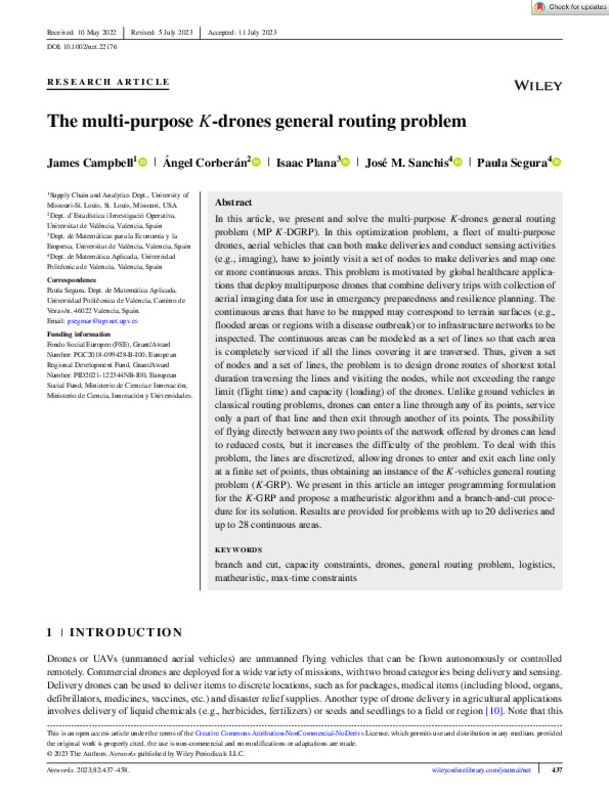JavaScript is disabled for your browser. Some features of this site may not work without it.
Buscar en RiuNet
Listar
Mi cuenta
Estadísticas
Ayuda RiuNet
Admin. UPV
The multi-purpose K-drones general routing problem
Mostrar el registro completo del ítem
Campbell, J.; Corberán, Á.; Plana, I.; Sanchís Llopis, JM.; Segura-Martínez, P. (2023). The multi-purpose K-drones general routing problem. Networks. 82(4):437-458. https://doi.org/10.1002/net.22176
Por favor, use este identificador para citar o enlazar este ítem: http://hdl.handle.net/10251/203282
Ficheros en el ítem
Metadatos del ítem
| Título: | The multi-purpose K-drones general routing problem | |
| Autor: | Campbell, James Corberán, Ángel Plana, Isaac | |
| Entidad UPV: |
|
|
| Fecha difusión: |
|
|
| Resumen: |
[EN] In this article, we present and solve the multi-pur pose K-drones general routing problem (MP K-DGRP). In this optimization problem, a fleet of multi-pur pose drones, aerial vehicles that can both make deliveries and ...[+]
|
|
| Palabras clave: |
|
|
| Derechos de uso: | Reconocimiento - No comercial - Sin obra derivada (by-nc-nd) | |
| Fuente: |
|
|
| DOI: |
|
|
| Editorial: |
|
|
| Versión del editor: | https://doi.org/10.1002/net.22176 | |
| Código del Proyecto: |
|
|
| Agradecimientos: |
Fondo Social Europeo (FSE), Grant/Award Number: PGC2018-099428-B-I00; European Regional Development Fund, Grant/Award Number: PID2021-122344NB-I00; European Social Fund; Ministerio de Ciencia e Innovacion; Ministerio de ...[+]
|
|
| Tipo: |
|









